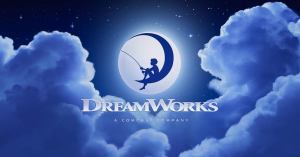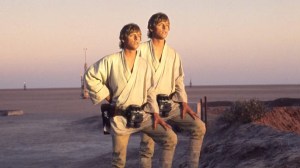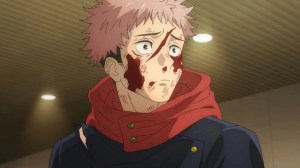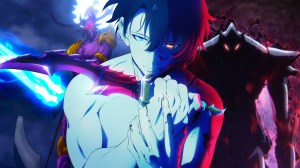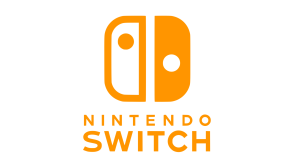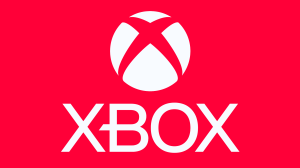The Justice League is the greatest team in the history of the DC Multiverse. The Justice League wasn’t the first superteam of the Silver Age — that was the Legion of Superheroes — but they were the one that showed readers what a superteam could be. The Justice League combined the greatest heroes on Earth, a modification of series creator Gardner Fox’s Golden Age Justice Society of America, and presented them in all the gonzo sci-fi superhero splendor that only Silver Age DC could muster. Justice League of America was the best value for DC readers, bringing in new characters and helping make them into stars. The Justice League defined what a superteam could be in its 64 years of existence, wowing readers with some amazing stories.
Videos by ComicBook.com
The Justice League has had some off years, but there are some amazing Justice League stories out there. There’s something about a superteam that can contend with threats that are universal in scope that makes the Justice League such a treat to read. These ten Justice League stories are some of the best, showing off the promise of the greatest superteam in any universe.
JLA #5
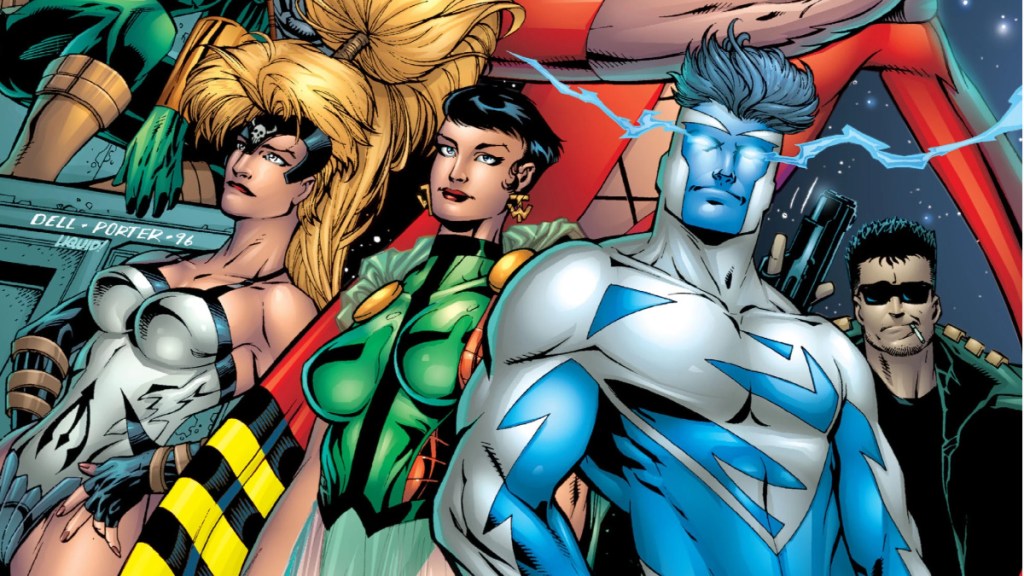
JLA #5, by Grant Morrison and Howard Porter, will be the first of several stories from Morrison and Porter’s JLA run on this list. It’s one that often gets overlooked, but it deserves its flowers as a top ranked Justice League story. This issue revolves around the JLA interviewing heroes to bring in a new member — a nice little window to DC in the late ’90s — leading to them finding the perfect candidate: Tomorrow Woman. However, she’s too good to be true, as she’s an android plant created by Professor Ivo and T.O. Morrow, sent to destroy the Justice League. What follows is a beautiful tale that shows the power of love and friendship. This one issue story is perfect in every way. The writing and art are sensational, and the issue does an amazing job of presenting a meditation on what life means. Issues like this are why Morrison’s JLA is such a killer book.
Formerly Known As the Justice League
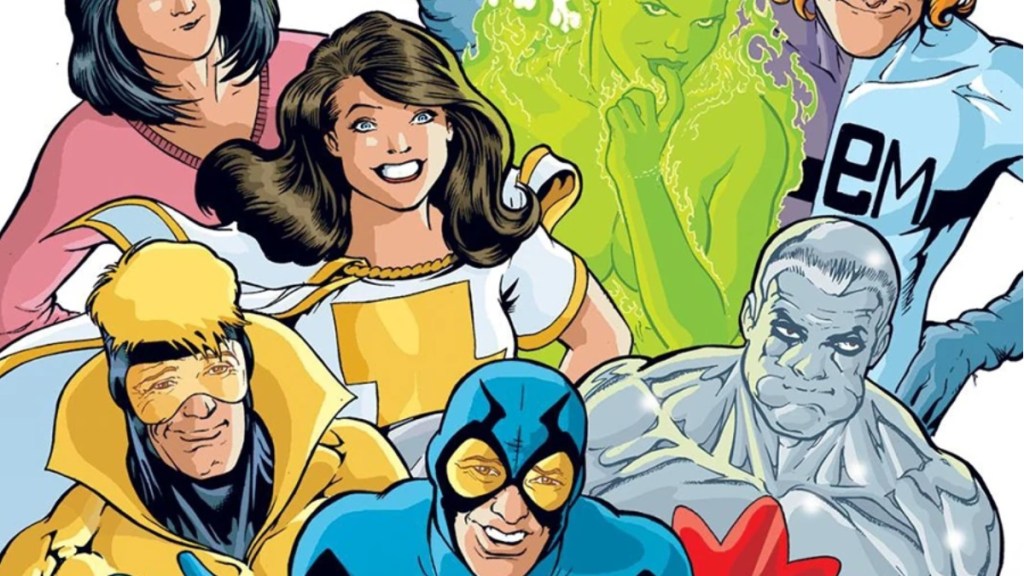
The 1980s “Bwa-ha-ha” era of the Justice League is a beautiful subversion of what a Justice League comic could be. J.M. DeMatteis, the late great Keith Giffen, and Kevin Maguire’s work on Justice League International took a team of B and C-list Justice Leaguers and put them in insane adventures, using superheroes as fertile ground for some amazing comedy. There are a lot of great JLI stories to recommend, but the one that boils the era down to its essence is Formerly Known As the Justice League, a six issue miniseries that brought the fan-favorite team — Booster Gold, Blue Beetle, Captain Atom, Fire, Elongated Man, Sue Dibny, Maxwell Lord, and L-Ron — back together for a crazy superhero for hire scheme that leads to the return of an old foe. This is the perfect book to give to someone who never read this era of the team; if they like it, than they are ready to dig into Justice League International. This story is full of amazing jokes, the best characters you can imagine, and gorgeous art. There’s so much to like that it will make fans of anyone.
“Crisis on Earth-One!/Crisis on Earth-Two!”
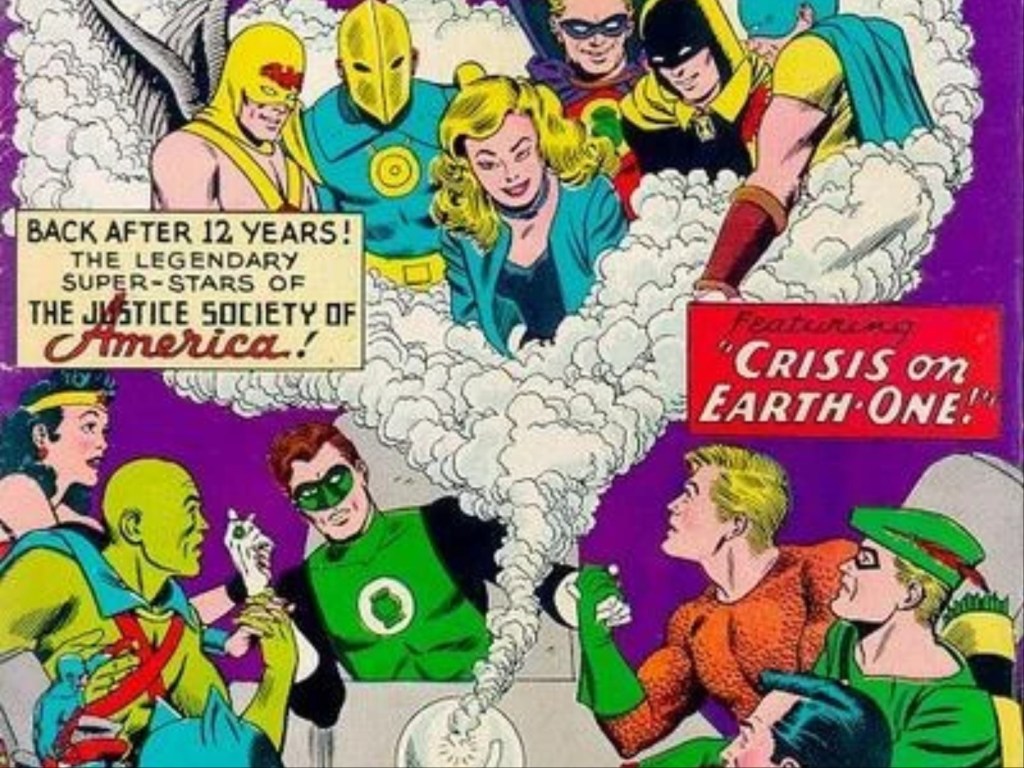
Silver Age Justice League of America can often feel like a snapshot from a very different place. There isn’t the snappy patter of Stan Lee Marvel at DC in the Silver Age, but the books have their own merit and its fantastic to see the Justice League in such a “raw” form, watching as they tackled threats that no other team could handle. There’s some brilliant comics from the Gardner Fox — one of comics’ most creative writers and the man mostly responsible for what we know as the DC Multiverse — and Mike Sekowsky’s run on Justice League of America. However, the best for a modern fan looking for pitch perfect Justice League is the one-two punch of “Crisis on Earth-One!/Crisis on Earth-Two” double header from Justice League of America (Vol. 1) #21-22. This was the first crossover between the Justice League and Justice Society, a major moment for fans who had grown up on DC Comics when it dropped. It’s a snapshot of the Justice League in their ascension, and sets the stage for every JLA/JSA crossover that came after it.
JLA/JSA: Virtue and Vice
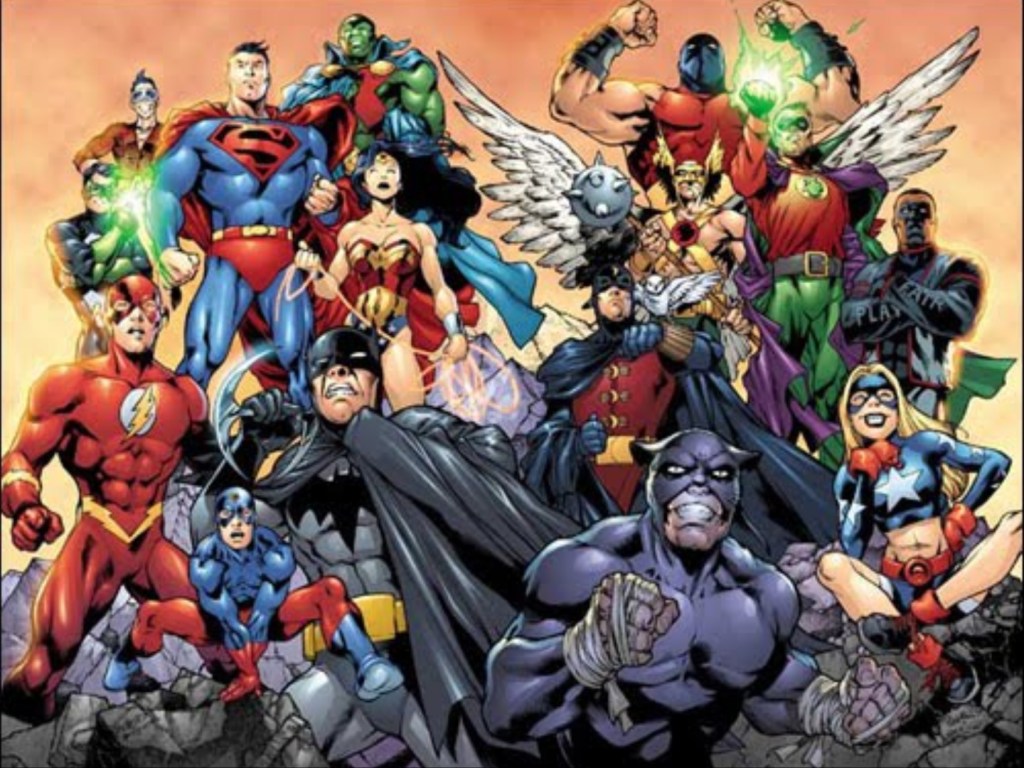
Throughout the ’90s, JLA was DC’s premiere team book, but that changed in the early ’00s. JSA, written by a young Geoff Johns and David S. Goyer of DCEU infamy, became the DC team book of choice and has gone down as one of the greatest team comics ever. There hadn’t been an old school JLA/JSA team-up since Crisis on Infinite Earths, so DC enilsted Johns and Goyer, along with artist Carlos Pacheco, for JLA/JSA: Virtue and Vice, a book meant to hearken back to the yearly meetings between the two teams. The JLA and JSA get together to reopen relations, but when the Seven Deadly Sins are released and members of both teams are possessed. While the two groups deal with some of their powerful members under enemy control, they’re pulled into a scheme by two of their most dangerous villains to wreck everything. JLA/JSA: Virtue and Vice is a snapshot of a very particular era of DC, combining two amazing teams for one epic story unlike any other.
“World War III”

Grant Morrison and Howard Porter’s run on JLA reminded everyone what a JLA comic could be, stealing the show every month with the promise of the Justice League facing off against threats that would destroy any other team. Morrison had pitted the team against White Martians, a host of rebel angels, their greatest foes in the Injustice Gang, Darkseid, and fate itself. In order to cap off their run, Morrison had to go bigger than ever, throwing the team against Mageddon, a primordial destroyer from the wars between the old gods in universes past just as a new Injustice Gang rear their ugly heads in “World War III”. “World War III” takes the epic feel that Morrison did so well and dialed everything up to a billion, as the Justice League vied with an enemy that was far beyond anything they had faced before, a battle that had been built up in subtle ways since the beginning of JLA. “World War III” is the kind of story that feels like a major event, but was just a regular story in the best team book of the ’90s.
RELATED: The First DC All In Crossover Has Arrived with “We Are Yesterday”
Infinite Crisis
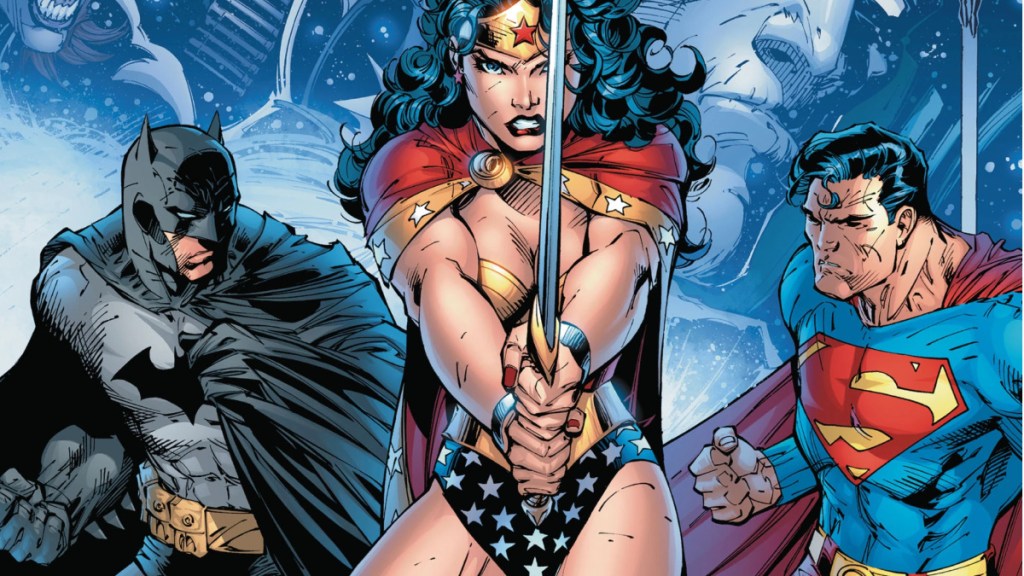
Infinite Crisis, by Geoff Johns, Phil Jimenez, George Perez, Jerry Ordway, and Ivan Reis, isn’t technically a Justice League story. In fact, a major element of the story is the lack of the Justice League. However, there are few stories out there that show that the Justice League is an indispensable part of the DC Universe like Infinite Crisis does. With threats from inside and without tearing the hero community apart, forgotten heroes return with an audacious scheme to set things right. However, mysterious forces have their own plans to take advantage of the chaos for their own ends, leading to a battle unlike anything readers had seen before. Infinite Crisis is a masterwork of one of best eras. It was the culmination of several years of build-up, and gave readers an event comic that belongs in the pantheon of the best of all-time. This story turns twenty in 2025, but it’s still the best treatise on why the Justice League needs to exist.
Justice League Elite

Writer Joe Kelly doesn’t get enough credit for just how good he was in the late ’90s and early ’00s, and his run on JLA with artist Doug Mahnke often gets left out of consideration for best Justice League stories, with epics like “The Obsidian Age” wowing fans. Kelly also gave readers a best of all-time DC story with his Action Comics classic “Whatever Happened to Truth, Justice, and the American Way?”, which introduced the Elite, a team meant to lampoon the mature and violent superteams of the early ’00s. Justice League Elite, by Kelly and Mahnke, takes elements of their JLA run, adds in the Elite, and goes to town in a twelve issue series that gets insane. Under the leadership of Sister Superior, the Justice League Elite is formed to be a black ops arm of the League, with Leaguers Green Arrow, Manitou Raven, Manitou Dawn, Green Arrow, and Major Disaster teaming up with the Elite. As they battle threats the Justice League usually wouldn’t, an old enemy returns with nothing less than ultimate power as their goal. Justice League Elite is a precursor to all of the “black ops teams” that would become popular in the later years of the 21st century and presents the best possible interpretation of the trope. It’s a brilliant yarn and while it’s definitely hard to locate — it’s been out of print for years and it’s a slog to find it all — it’s definitely worth the effort.
“The Tornado’s Path”

Justice League of America (Vol. 2) was introduced in the aftermath of Infinite Crisis, meant to bring the League back as a force to reckoned and a team to inspire heroes around the world. “The Tornado’s Path”, by Brad Meltzer and Ed Benes, collects #0-7 of the new series, which follows various heroes — Superman, Batman, Wonder Woman, Black Canary, Hal Jordan, Hawkgirl, Speedy, who takes up the name Red Arrow, Black Lightning, Vixen, and Red Tornado — get enmeshed in a scheme by one of the most dangerous beings on the planet, one whose latest circumstances make him more of a threat than ever. “The Tornado’s Path” does an amazing job of laying out a story that hearkens back to the Satellite League days of the team, while also being thoroughly modern. It’s a page-turner of the highest magnitude, pulling readers in, and throwing multiple aspects of DC history at them. This is near perfect modern Justice League, and a thrill for any fans of the team, as Meltzer’s entire twelve issue run — and Dwayne McDuffie’s unfortunately cut short run that followed it — is definitely worth the trouble of tracking down.
JLA #22-23

Most people would put Morrison and Porter’s “New World Order” on this list, but as great as that story is, there are several other Morrison/Porter stories that deserve more credit than they get. JLA #22-23 is one of those stories. This story played off a plot element started in JLA: Secret Files and Origins, which brought back the Justice League’s first villain — Starro the Conqueror. This two issue story saw Daniel, the current Dream, come to the Justice League for help to wake up one very special dreamer as the Earth is attacked by Starro and the Star Conquerors. Morrison and Porter put out some amazing two issue Justice League epics, but this one is easily the best. It has the big stakes action and beautiful art that JLA became known for, while also going in completely different directions from any Starro story that came before it. It’s a story that more fans needs to read and it’s more than earned its place among the greatest Justice League stories of all-time.
“Rock of Ages”
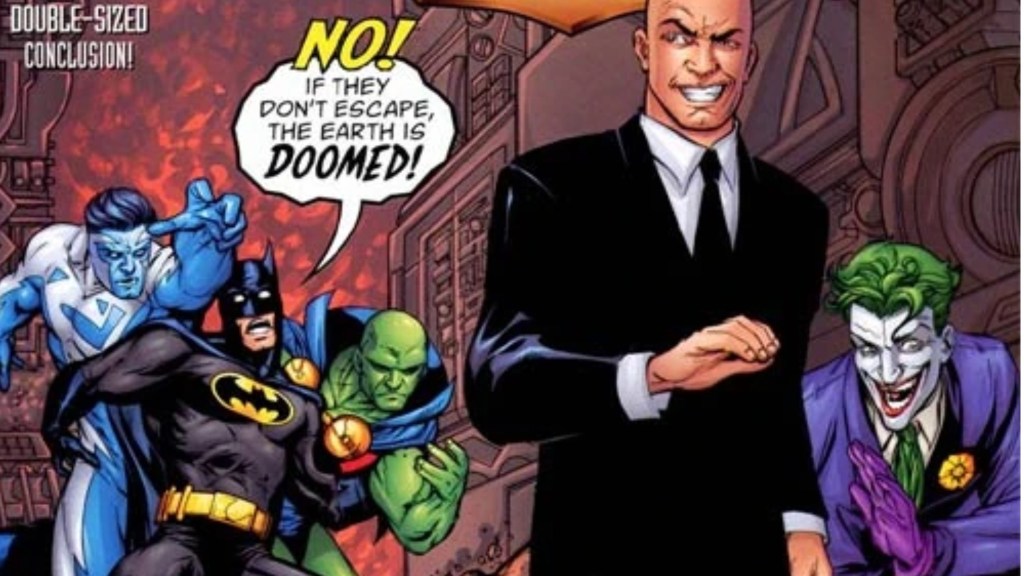
Morrison’s “Rock of Ages” is in a class all its own. It’s the first appearance of the Injustice Gang, as Lex Luthor gathers a group of villains with the goal of destroying the new JLA. However, this time Luthor decides to use corporate principles to destroy the League, along with two secret weapons — the Philosopher’s Stone and a hidden ally. The League is completely gobsmacked by Luthor’s attack, leading them to do their best to take out the Injustice Gang when the chips are down. Meanwhile, Aquaman, Flash, and Green Lantern are pulled away by Metron for another mission, one that revolves around the Philosopher Stone, that will take them to Wonderworld, a world of god-like heroes with a terrible warning for the League. What follows is a trip to a future ruled by Darkseid, one that can only be stopped by allowing the Injustice Gang to win. “Rock of Ages” is the perfect Justice League story. It has amazing superhero action, great art, and deft characterization, gifting readers with a twisty but rewarding narrative that proves the greatness of the Justice League. A true classic.


